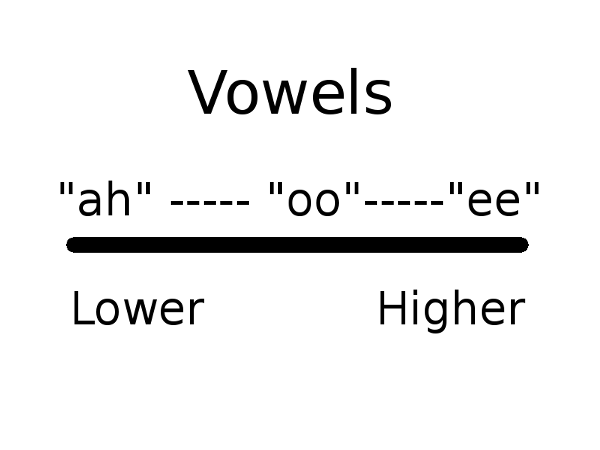
Ninth Bassoon Lesson, Part 1
Use of flick or speaker keys. By Terry B. Ewell. BDP#193.
www.2reed.net/bdp.
Ninth Bassoon Lesson, Part 1. Using vowels for pitch control; bassoon registers
and voicing. By Terry B. Ewell. BDP#199.
www.2reed.net/bdp.
<Intro
Music: “Home Sweet Home” from A Tune a Day,
lesson 29 number 6.>
By this time you are aware of a
couple ways to control the pitch on the bassoon. Remember the articulation
experiments in lesson 3, BDP #33?
In those experiments we charted the pitch response of more and less air and
changes in the embouchure. If you need to review this, here are the links for
English and Chinese versions:
English:
http://www.youtube.com/v/Zv20zy2O8Mo
Chinese:
In this lesson I will introduce a third pitch control component: changes in
vowels. This is also called “voicing.”
The best way to illustrate this is to pick a rather unstable note on the
bassoon, Bb3. Let’s change the vowel in our mouth from “ee” to “ah.
“Ee” as in teeth and “ah” as in awful.
When I play the note I don’t speak the vowel rather I just move my tongue. I
will try to do this without moving my jaw.
<Example of changes in pitch with vowel changes on Bb3>

Did you hear the difference in the pitch? Well, obviously. The “ee” vowel has a
higher pitch than the “ah” vowel.
Now the “ah” and the “ee” vowels represent the extremes, the outer edges of that
vowel spectrum, voicing spectrum. There are other vowels in between the two. I
think that the one that best describes the middle ground is “oo” as in tooth or
the German umlaut “ü.” It is something in between the two (extremes).
Let’s just practice that. Put your teeth together and practice going from “ah”
to “oo to “ee” and back and forth.
<Example of “ah” – “oo” – “ee”>
It is hard not to move your lips there, isn’t it? If you cannot move your
embouchure, your lips here and transition through those vowels, you get a real
good idea of the different tongue positions that are possible.
Now the bassoon has registers that move from darkest vowels—I will call “ah” the darkest vowel—to the brightest vowel “ee.” The lowest note you have learned so far is F2.

F2
definitely needs that “ah,” that darker vowel. It keeps down the pitch and opens
up the resonance. As we move through that first register of the bassoon up to
E3, we tend to move through and to brighter vowels. When I thinkg about it, I am
not really quite at an “ee” vowel when I get to E3.
Maybe it is more of an “oo,” the
transitional vowel. But when I get to F, F3, that tends to be a sharper note on
my instrument so I have to drop back to a darker vowel, more of an “ah” vowel.
Certainly the F#3 and G3 need to have that darker vowel that really drops the
pitch. These are very sharp notes on our instrument.
Then very quickly for this new
register, for the second register on the bassoon, I move up through the “oo”
vowel. That is probably on the A. By Bb and certainly C4, which is flat, I am
using the “ee” vowel.
So there are transitions. There
is movement from the notes you know so far, from F2 up to E3. Starting again on
F3 through the next register: “ah” through “oo”
to “ee.”
Let me play an F major scale, one and a half octaves, to illustrate the changes.

<Example: F major scale with
vowel changes>
Part of your development as a
bassoonist will be to use your ear to tune each note, get a great sound, and get
the maximum resonance on the note. Listening to how embouchure, air, and vowels
change each note will help you do this. Now, this is going to take you many
years to develop that full sound and have a great sound at all of the dynamics.
Keep in mind that the vowel changes, the voicings, can be a significant tool to
use for tuning and also for color changes.
<Closing
Music: “Home Sweet Home” from A Tune a Day,
lesson 29 number 6.>
Copyright (c) 2016 By Terry B. Ewell. All rights reserved.